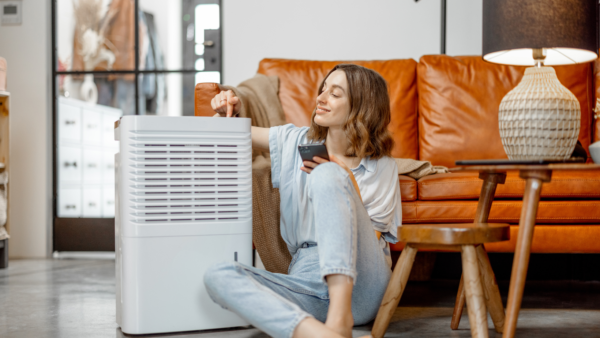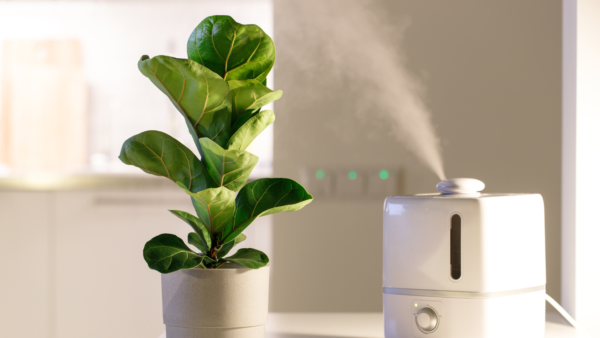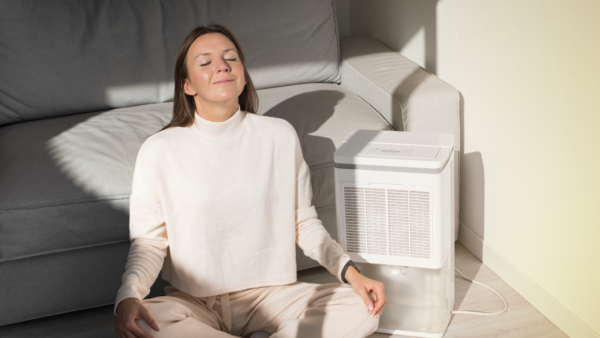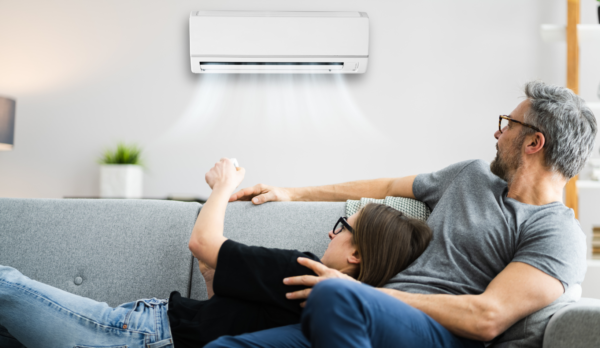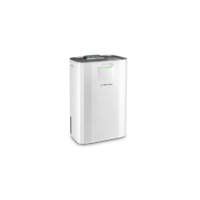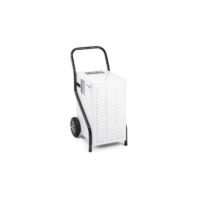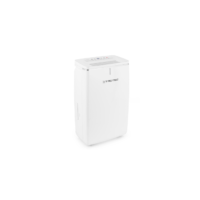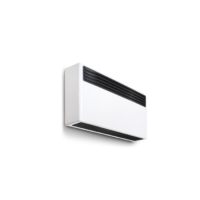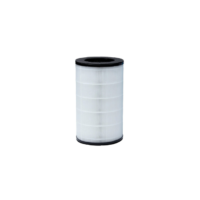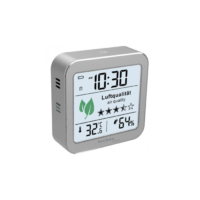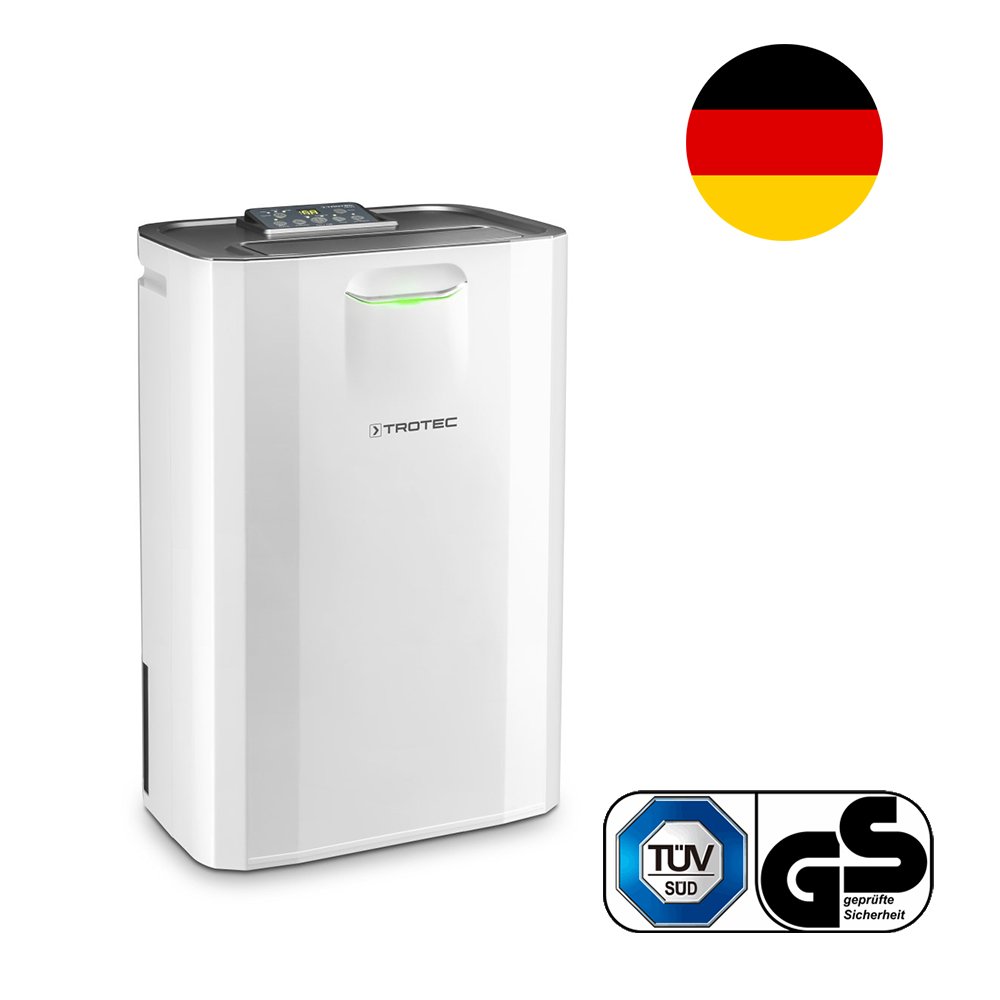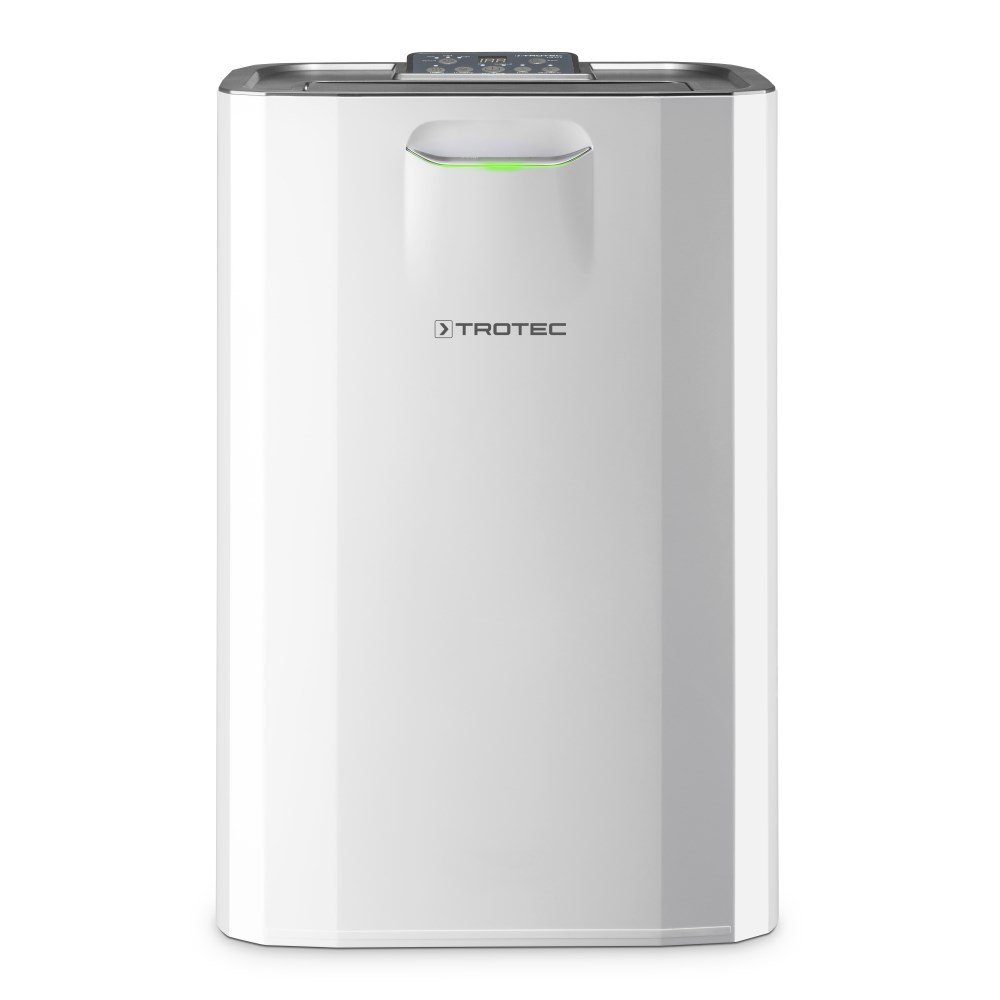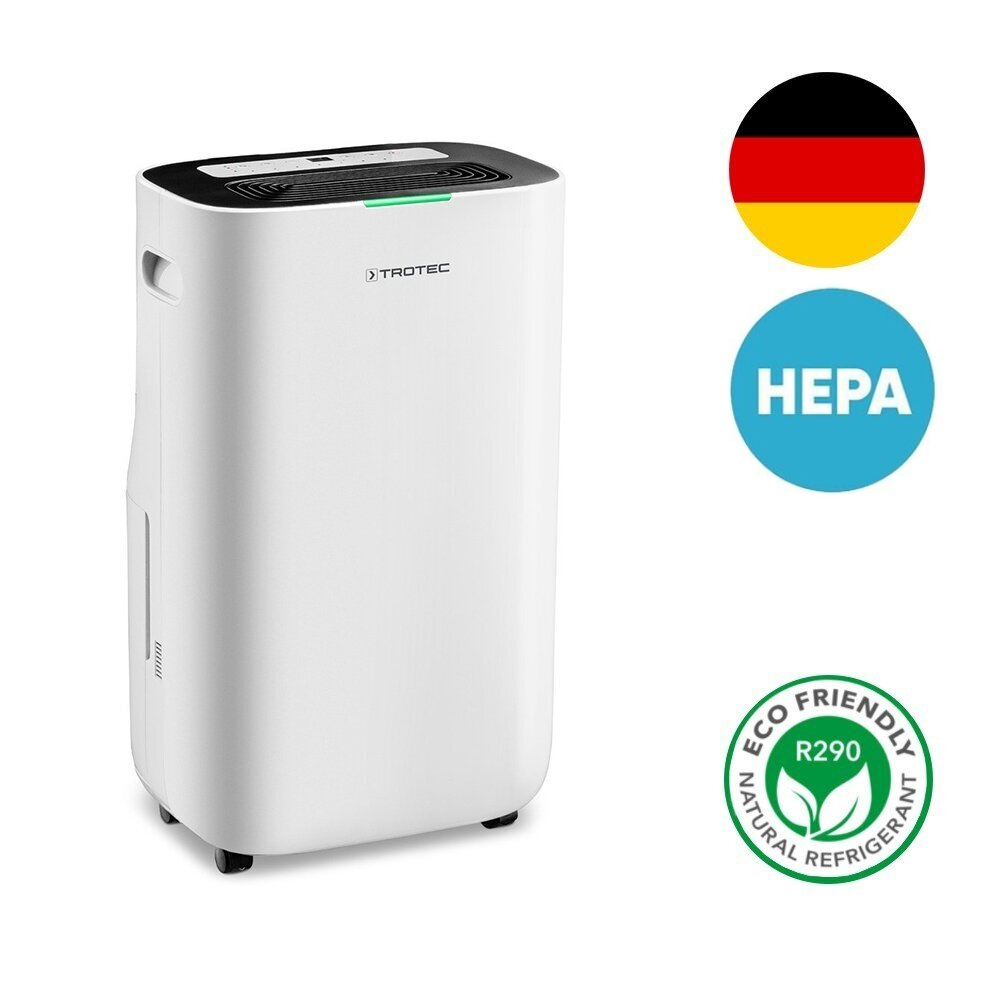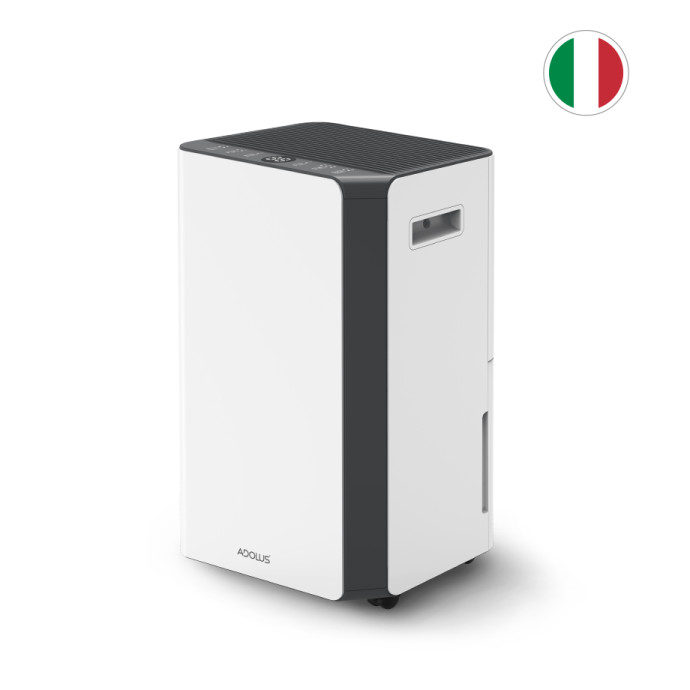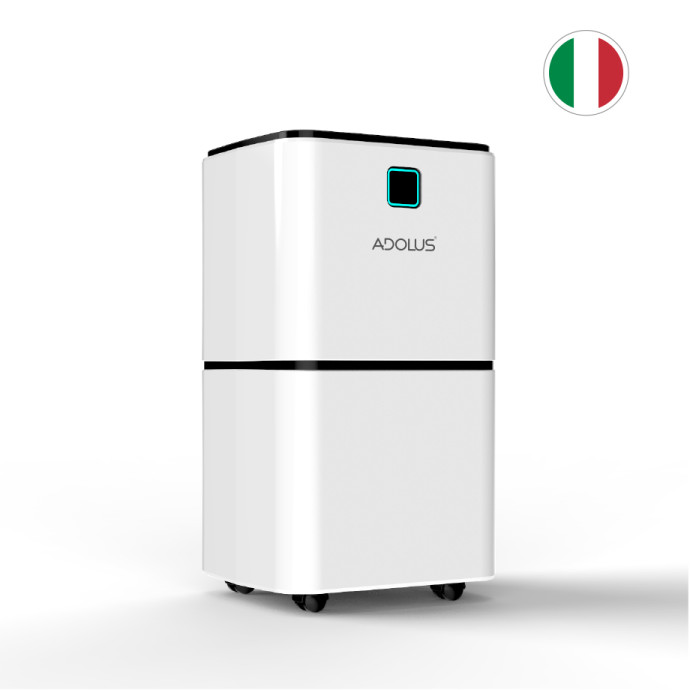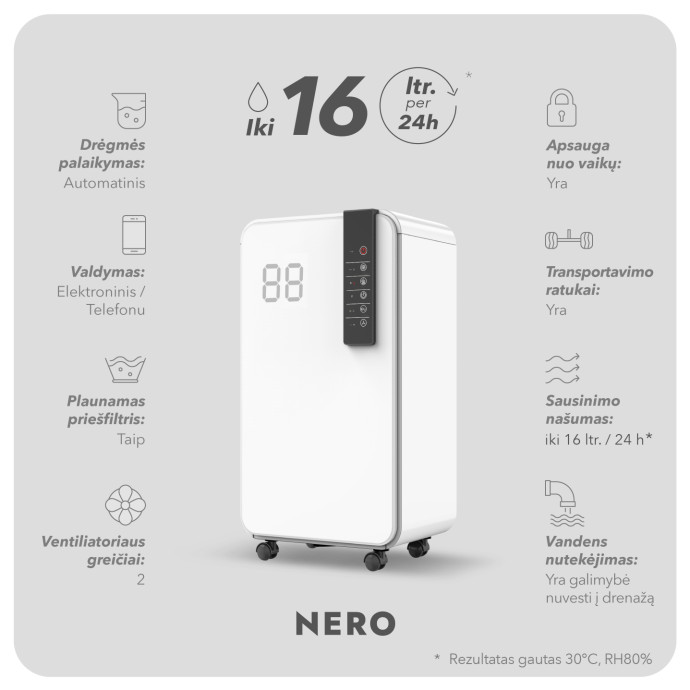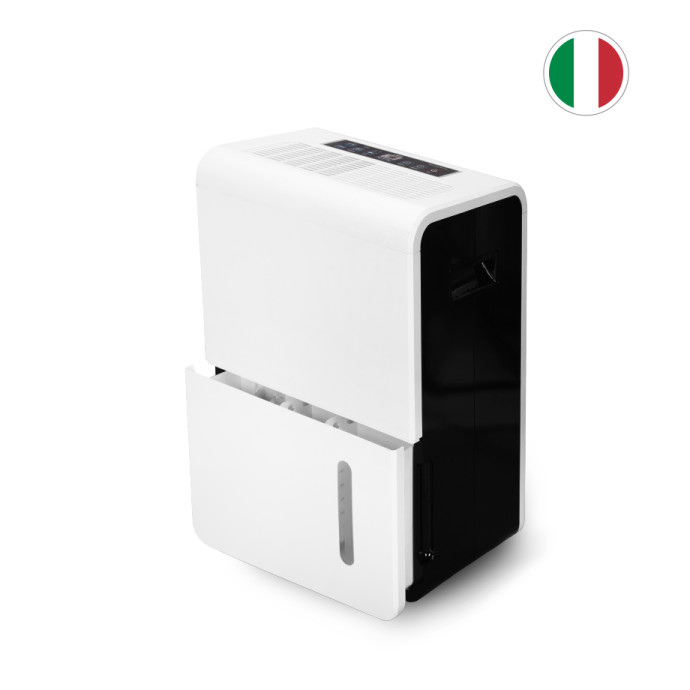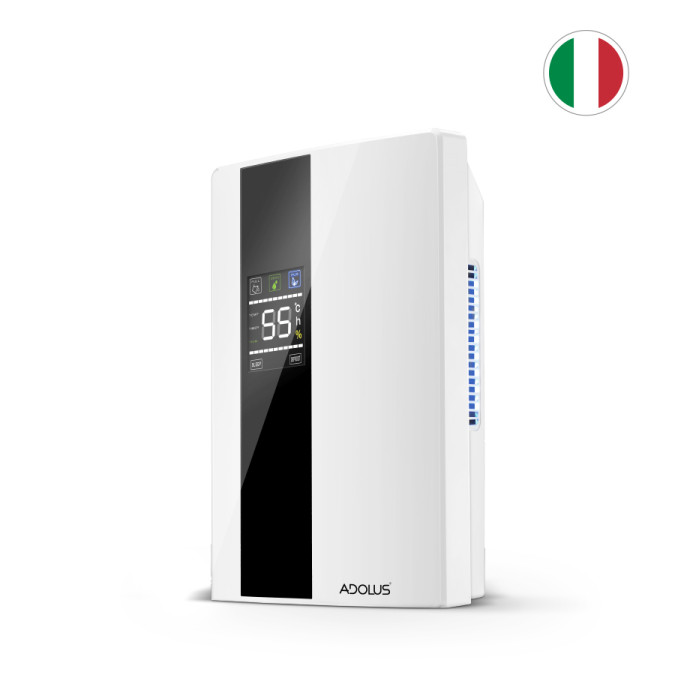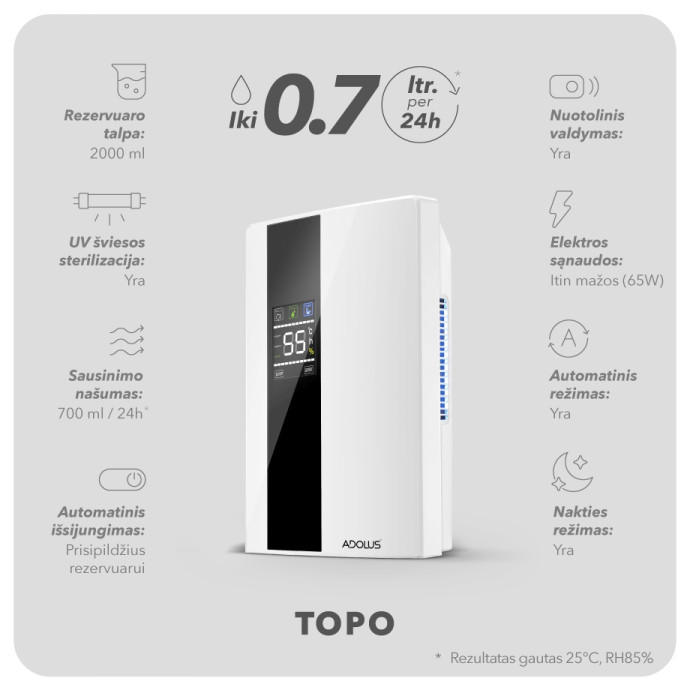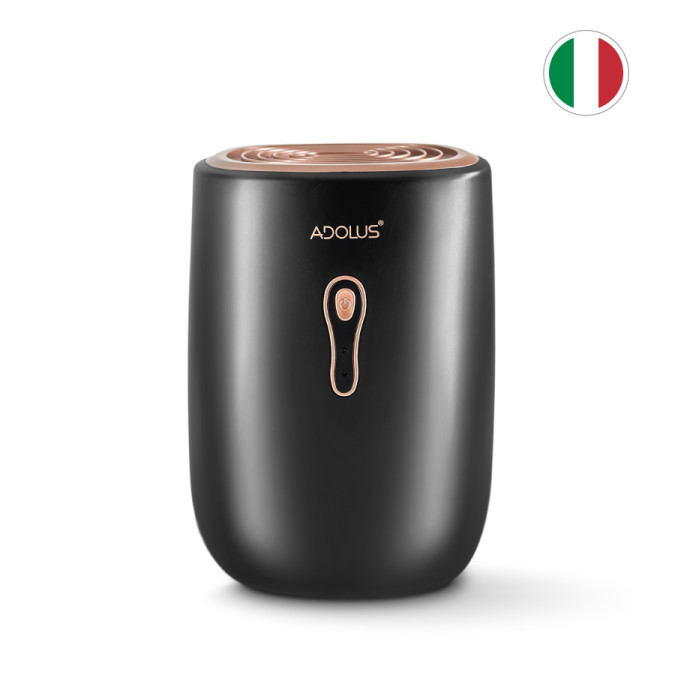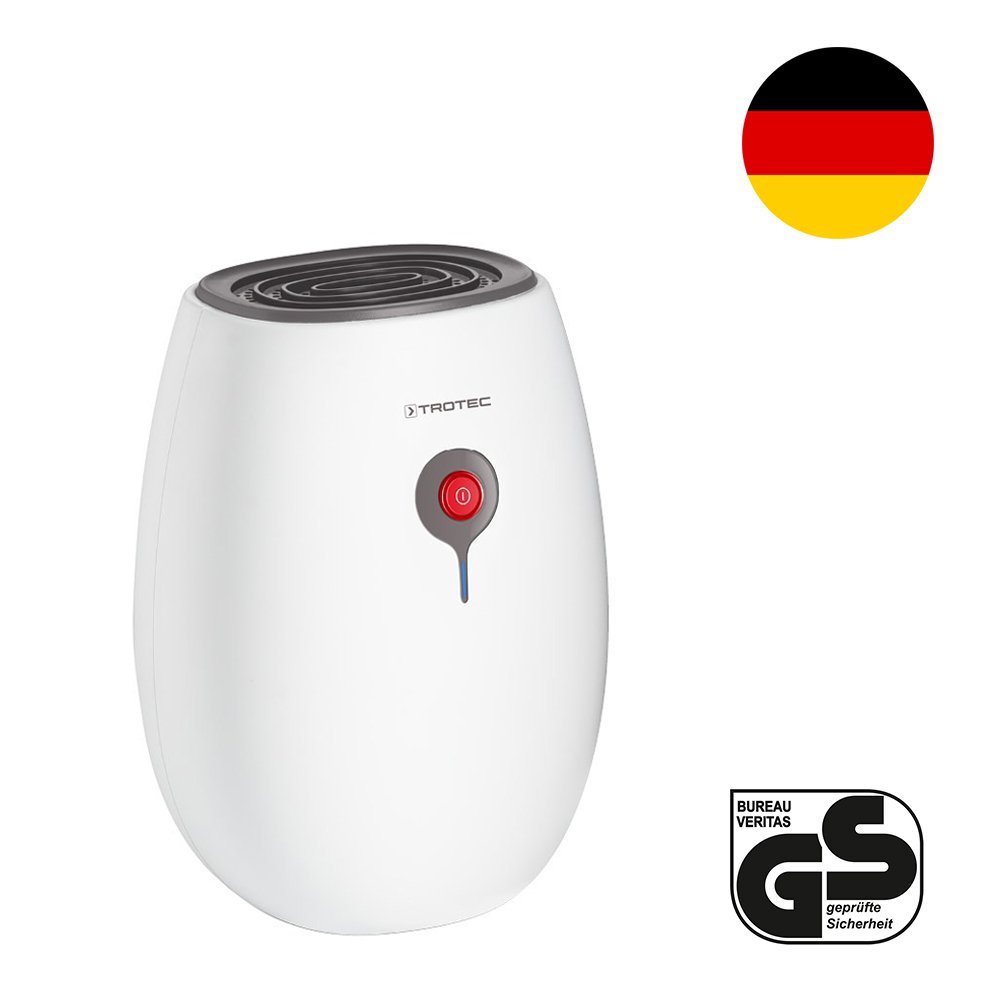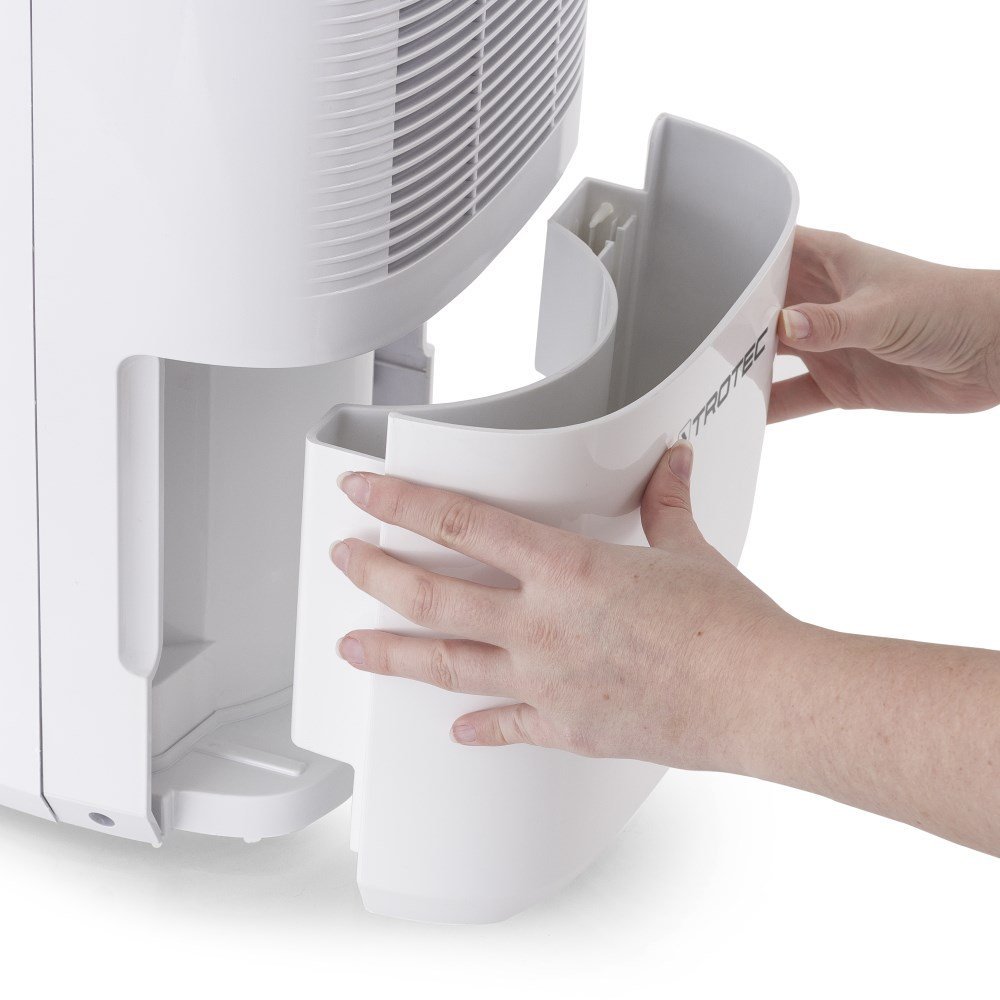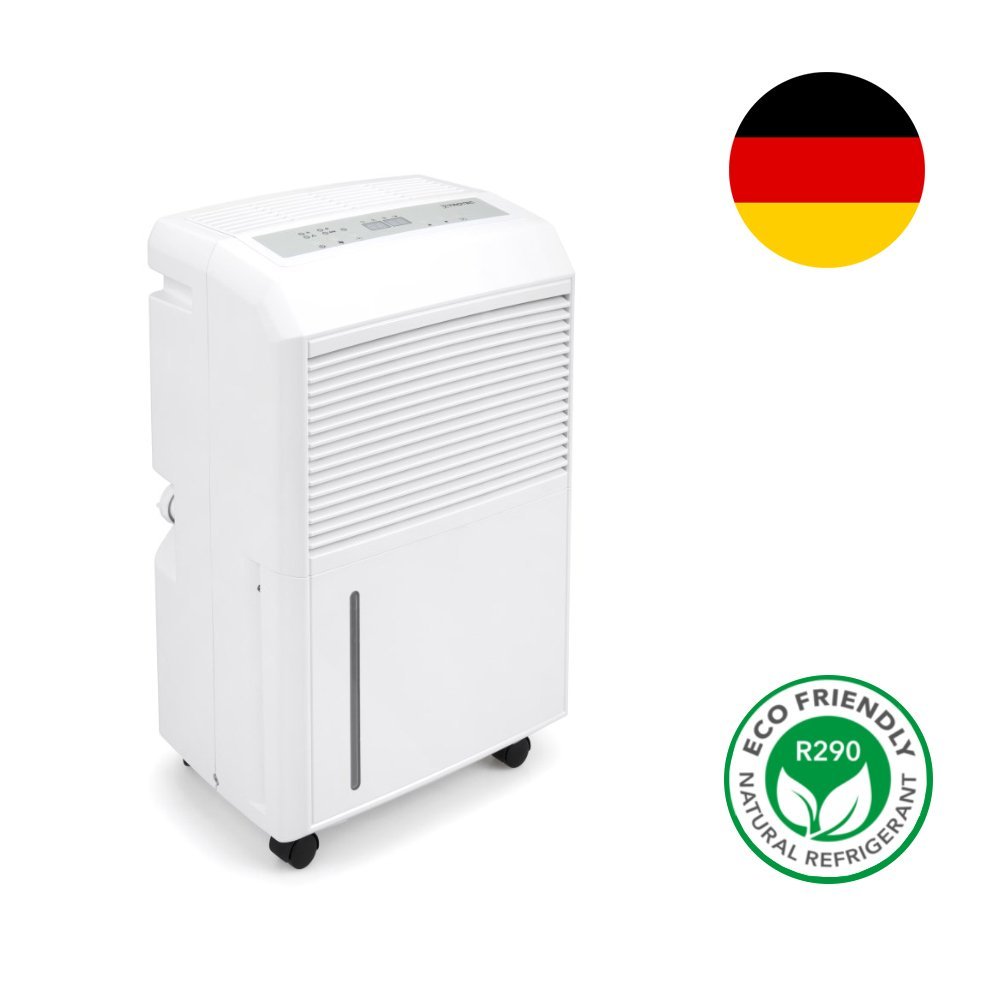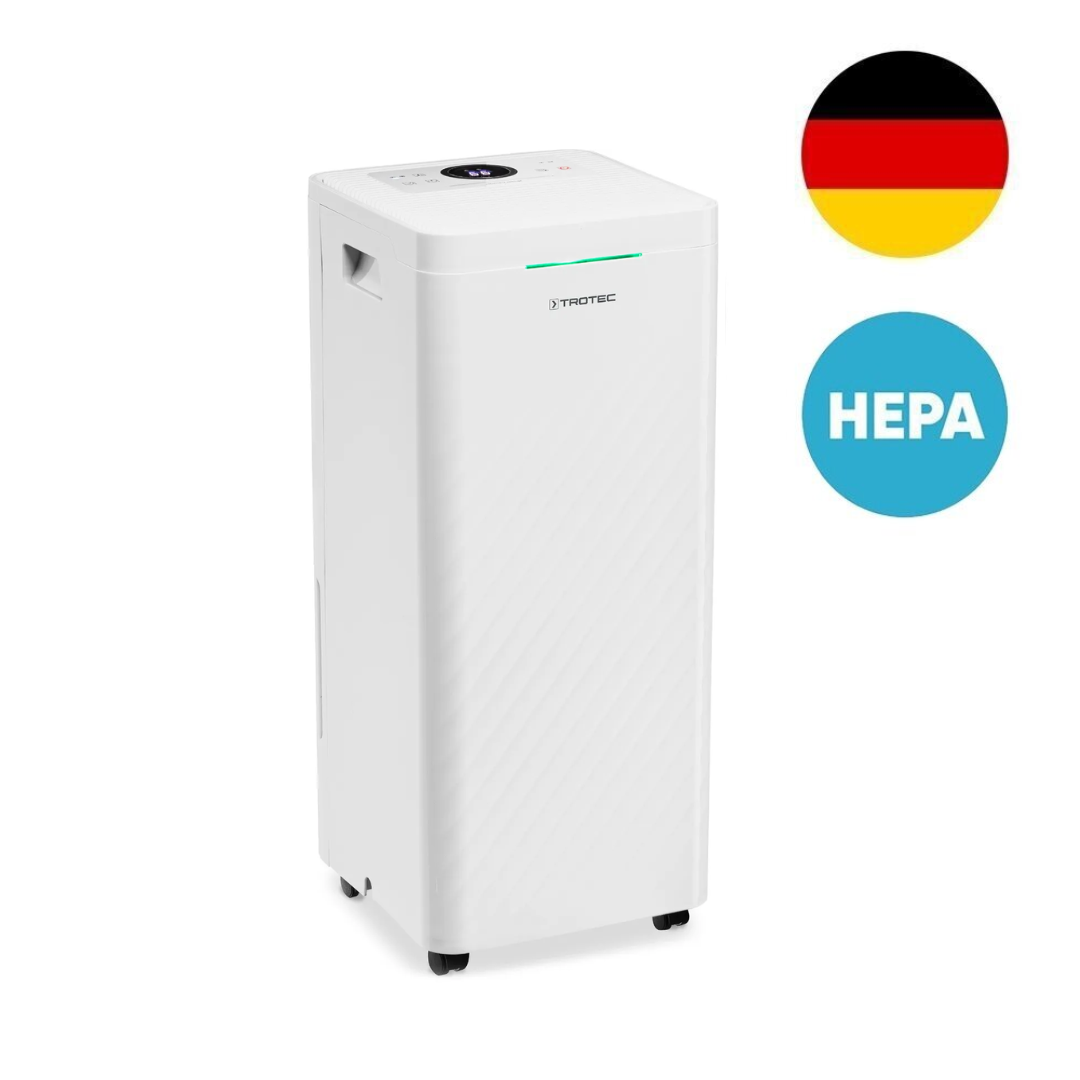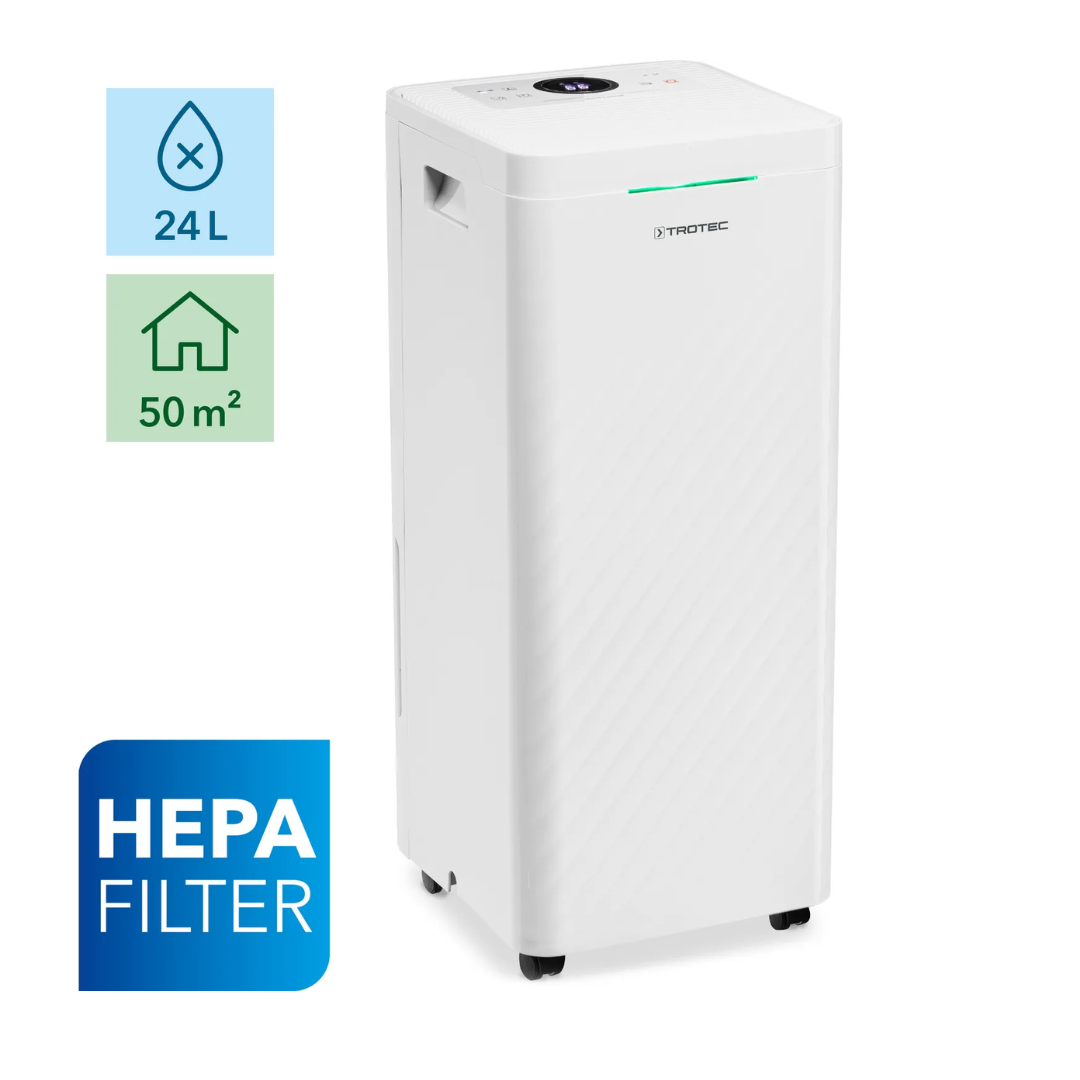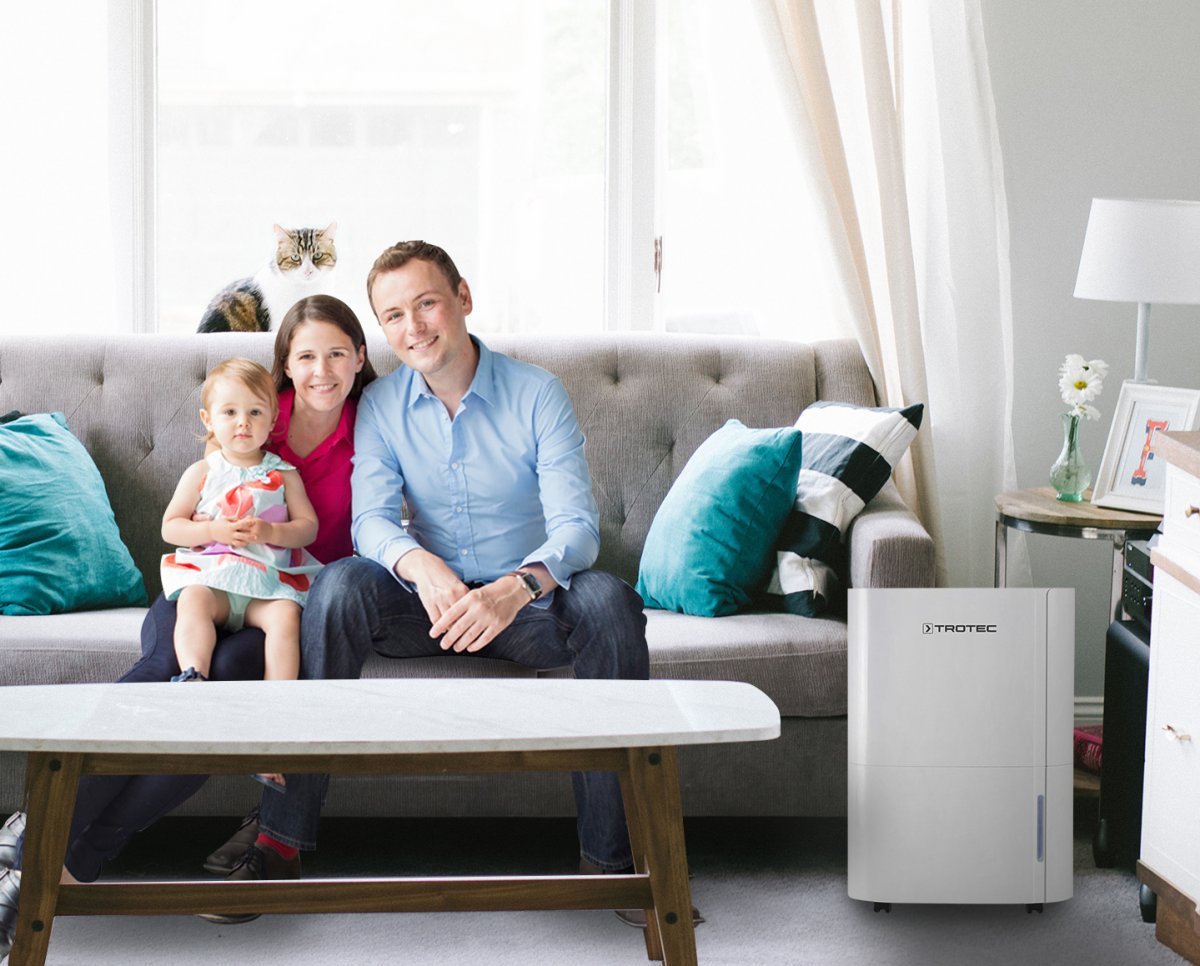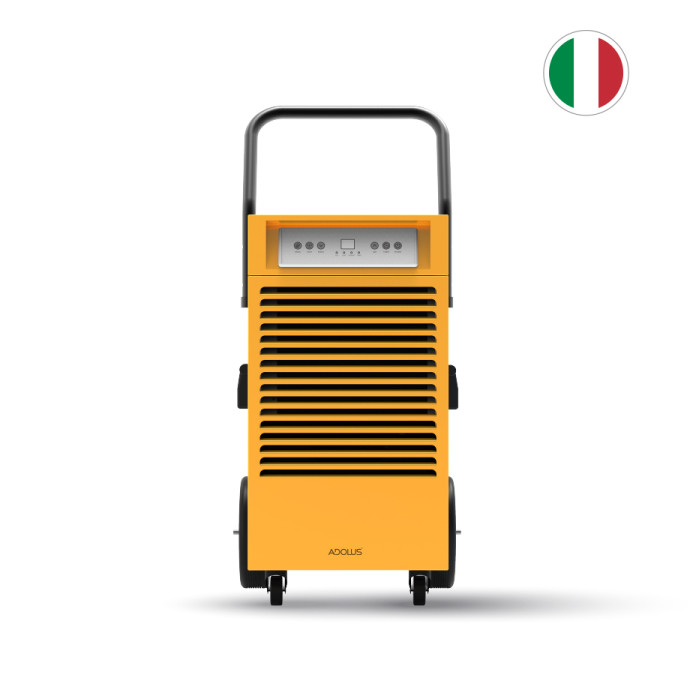Showing 1–18 of 50 results
Dehumidifiers and dehumidifiers
Dehumidifier (also known as dehumidifier, dehumidifier, moisture collector) – is a device designed to remove excess moisture from the environment or to regulate the relative humidity in a room. It acts as an air dryer, collecting moisture from the air into a special container or removing water through direct drainage to the sewer.
Dehumidifiers can help reduce relative humidity to the desired level (for example, 20-50 percent)., so mold, dust mites, and other pathogens can no longer grow in the home. Dryer air helps prevent allergies, various other health problems, and simply makes life more comfortable.
You can choose a moisture collector in our e-shop using the search filters. – select the recommended room size and, if applicable, the required dehumidification capacity. If you have any questions, We invite you to use the product selection questionnaire - we will select the best dehumidifier for you based on the issues in your situation.
Categories
- Dehumidifiers 54
- Air humidifiers 34
- Air purifiers 38
- Ventilation 191
- Cooling 95
- Heating 137
- Test products 41
- Uncategorized 954
Price:
Dehumidifiers
Adsorption dehumidifier Trotec TTR 57 E
Rated 5.00 out of 5
300,00 €
Room size: 0-20 m²Dehumidification performance: 0-10 l/24 hDelivery time: 1-3 days
Air dehumidifier - purifier Clean Air CA-704
349,00 € Room size: 31-50 m²Dehumidification performance: 11-20 l/24 hoursDelivery time: 1-3 daysCondenser dehumidifier Trotec TTK 70 HEPA
275,00 € Room size: 31-50 m²Dehumidification performance: 21-30 l/24 hoursDelivery time: 1-3 daysDehumidifier Adolus EVO
209,00 € Room size: 21-30 m²Dehumidification performance: 11-20 l/24 hoursDelivery time: 10-14 daysDehumidifier Adolus LUMOS
159,00 € Room size: 21-30 m²Dehumidification performance: 11-20 l/24 hoursDelivery time: 10-14 daysDehumidifier Adolus NERO
189,00 € Room size: 21-30 m²Dehumidification performance: 11-20 l/24 hoursDelivery time: 10-14 daysDehumidifier Adolus ONE
139,00 € Room size: 0-20 m²Dehumidification performance: 0-10 l/24 hDelivery time: 1-3 daysDehumidifier Adolus OSMO
349,00 € Room size: 31-50 m²Dehumidification performance: 31-50 l/24 hoursDelivery time: 10-14 daysDehumidifier Adolus TOPO
74,00 € Room size: 0-20 m²Dehumidification performance: 0-10 l/24 hDelivery time: 1-3 daysDehumidifier Adolus VIVO
44,00 € Room size: 0-20 m²Dehumidification performance: 0-10 l/24 hDelivery time: 1-3 daysThermoelectric dehumidifier Trotec TTP 2 E
43,00 € Room size: 0-20 m²Dehumidification performance: 0-10 l/24 hDelivery time: 1-3 daysCondensing air dryer Trotec TTK 26 E
169,00 € Room size: 0-20, 21-30 m²Dehumidification performance: 0-10, 11-20 l/24 hDelivery time: 10-14 daysCondensing air dryer Trotec TTK 30 E
175,00 € Room size: 31-50 m²Dehumidification performance: 11-20 l/24 hoursDelivery time: 1-3 daysCondensing air dryer Trotec TTK 90 E
310,00 € Room size: 51-100 m²Dehumidification performance: 21-30 l/24 hoursDelivery time: 1-3 daysAir dehumidifier - purifier Trotec TTK 64 HEPA
279,00 € Room size: 31-50 m²Dehumidification performance: 21-30 l/24 hoursDelivery time: 1-3 daysAir dryer Trotec TTK 66 E
265,00 € Room size: 31-50, 51-100 m²Dehumidification performance: 21-30 l/24 hoursDelivery time: 10-14 daysDehumidifier Adolus Cube X600
549,00 € Room size: 51-100 m²Dehumidification performance: 31-50 l/24 hoursDelivery time: 1-3 daysDehumidifier Adolus Cube X850
639,00 € Room size: 51-100 m²Dehumidification performance: 50< l/24 hoursDelivery time: 10-14 daysWhen is a moisture collector used?
Dehumidifiers are used when excess moisture can cause various problems, such as:
- condensation accumulation on the edges of windows and ceilings;
- unpleasant smell of dampness;
- damage to finishes and other materials;
- the appearance of mold and the spread of allergens, which requires mold removal, etc.
How do you know if you specifically need a dehumidifier?
To decide whether you really need a room dehumidifier, weather station – hygrometerThis device effectively measures the relative humidity level in rooms, temperature and CO2 content in the air.
As indicated National Public Health Center under the Ministry of Health on the website, indoors and during the cold season, humidity should be maintained at 35–60 percent, and the temperature should be between 18–22 °C.
According to various sources, a dehumidifier should be used when the humidity level in the room exceeds 60–70 %. However, there are more exceptions: if the temperature is higher than 22 °C or lower than 16 °C, then the humidity should not exceed 40 %.
How do moisture absorbers work?
These collectors, also called dehumidifiers, operate using different technologies. The most popular are:
- condensation system (cooling of air with a high level of humidity until condensation forms);
- absorption system (moisture absorption using special plates containing chemical compounds);
- combined method, when both condensing and absorption system components are used.
Each technology has its advantages and disadvantages, and it is important to choose a dehumidifier that meets your needs and environmental conditions.
You can learn more about how a dehumidifier works by watching this short video..
Where are moisture collectors used?
Dehumidifiers are used both in homes and in commercial or public spaces. But how do you distinguish between a home dehumidifier and an industrial one?
A dehumidifier for residential premises is usually smaller and does not aesthetically stand out from the interior.
And for larger production and storage facilities, where the relative humidity is high, more powerful, larger, and sometimes, if necessary, temperature-resistant dehumidifiers (industrial dehumidifiers) are used.
- Home dehumidifier (otherwise - mini dehumidifier). They are usually chosen based on the noise level, aesthetics and additional functionalities - integrated humidity meter, automatic on/off option at a certain humidity level, etc. Such single-room dehumidifiers (air) are usually used in the kitchen, bathroom, where there is no hood/fan, as well as in garages, basements, storerooms and attics, where there is insufficient ventilation and due to temperature differences, moisture condenses on surfaces.
- Industrial dehumidifiersThe latter are most often used in swimming pools, SPA centers, construction sites, garages, i.e. large rooms where the humidity level is high and a powerful device is needed to help effectively and quickly regulate the relative humidity level.
How to choose a dehumidifier?
A frequently asked question is – how to choose the right dehumidifier? It depends on the environmental conditions, the size of the room and the desired functionalities. Here are some important things to consider when choosing a dehumidifier:
- Capacity and sizeIf you will be using the collector in larger rooms, choose one with a larger water collection tank. Pay attention to the dimensions of the dehumidifier and the possibility of storing it in the desired location.
- Automation and features. Some dehumidifier models have various user-friendly features, such as automatic shut-off, humidity level adjustment, or multiple integrated air purification filters. These additional features are available in more expensive dehumidifiers.
- Energy efficiencyIt is worth paying attention to the energy efficiency and electricity consumption of the dehumidifier, especially if you plan to use it regularly for a long time. In this case, it may be more profitable to invest more: the costs will pay off handsomely in the long run.
What are the main types of dehumidifiers?
There are several types of electric dehumidifiers on the market, which are divided into several types based on their operation, energy consumption, and efficiency.
However, it is first important to keep in mind that An electric dehumidifier is different from a regular dehumidifier.If the collector does not have a power source, then a special tablet or loose components absorb moisture from the environment.
Such collectors are usually intended for extremely small rooms, they will not really help regulate the humidity level in a room or office, they are more suitable for cars, wall cabinets or similar small spaces up to a few sq. m.
Condensing dehumidifier
This type of dehumidifier uses the principle of a refrigeration cycle. The air passing through the filters is cooled to the dew point, then the condensate is collected in a container or goes directly to the sewer through a connected drain pipe.
Condensing dehumidifiers usually use electricity to power the fan.
This type of dehumidifier will be useful where humidity levels are very high., and the temperature is moderate. Many condensation dehumidifiers are automated: this allows you to quickly adjust the relative humidity level.
Absorbent moisture collector
An absorption dehumidifier uses a special hygroscopic material (usually silica gel or salt) that absorbs moisture from the air.
These materials have a fairly high absorption efficiency, and also usually operate without additional mechanical components, which makes condensation dehumidifiers quieter.
They also consume less electricity, do not require frequent maintenance, and can operate at low temperatures (as low as +1 °C).
What should be the efficiency of a dehumidifier?
Capacity is a metric that indicates how many liters of moisture a dehumidifier can collect per day. The larger the area, the more powerful the dehumidifier should be.
It is recommended to purchase a collector 15-30 % more powerful than the area of the room, because in this case the collector will not reach its maximum operating power potential, which will result in less wear and tear, and moisture will be collected much faster.
If you choose a device with a lower power than the area of the room to be dehumidified, such a dehumidifier will not work efficiently, and you will need to purchase at least several of them and place them in different places in the same room.
Quality dehumidifier: price
The price of dehumidifiers certainly won't shock you, but there are models whose price can approach five figures.
- Simple dehumidifiers for small rooms. The simplest moisture absorber with special tablets costs from around 40 euros.
- Electric dehumidifiers. A more powerful, efficient electric dehumidifier will cost on average from 100 to several hundred euros. A dehumidifier (electric), as already mentioned, is more functional, and the more different functions, the better, but accordingly the price of such a device will be higher.
- Industrial dehumidifiers. The most expensive pool dehumidifiers in our e-shop cost ~5,000–8,500 EUR.
If the fixed humidity level is constantly too high, a quality dehumidifier will be a great investment not only for preventing health problems, but also for other losses in the work or everyday environment.
The best dehumidifiers in our online store
Our TOP 3 most popular, most purchased dehumidifier models by our customers are:
- air dehumidifier - purifier "Trotec" TTK 27 HEPA (suitable for rooms of 15–25 sq m);
- Condensation dehumidifier Trotec TTK 70 HEPA (suitable for rooms up to 50 sq m);
- condensing air dryer "Trotec" TTK 96 E (suitable for rooms of 70–120 sq m).
The price of each of these dehumidifiers is very attractive. Their main difference is the airflow capacity, which allows you to collect from 12 to 30 liters per day at a temperature of +20 °C.
Since moisture-saturated air moves quickly into less saturated air, dehumidifiers designed for smaller rooms will dehumidify the air in 100 sq. m. indoors, but it will take longer.
If you want to remove excess moisture faster and avoid carrying dehumidifiers from one room to another, we suggest choosing a more powerful model.
The first two also have integrated HEPA filters, which makes them extremely effective at purifying the air, and they also have integrated temperature and humidity control, so you don't need to buy an additional hygrometer (weather station) to monitor the relative humidity level.
What to do if you can't choose a dehumidifier on your own?
If you are unable to choose the right device (which is completely natural, since many of you are choosing such a device for the first time), or have questions about certain models, we kindly invite you to call our specialistswho will advise you on which dehumidifier to purchase based on your needs.
Buyers rate
⭐⭐⭐⭐⭐ | Natalia B.
Everything is fine, received quickly, it would be good if there were instructions in Lithuanian or Russian, not just English, and it's incomplete, I had to search the internet to see how it works.
⭐⭐⭐⭐⭐ | Ingrid A.
I am very satisfied with the consultation, I wish there were more sellers like this.
⭐⭐⭐⭐⭐ | Igor M.
Very quickly delivered the product. Thank you
⭐⭐⭐⭐⭐ | Juozas J.
I bought a Blauberg MOON125T fan with a timer and a check valve. I couldn't order it online, so I ordered it by email. It was shipped the next day, and I received it the first business day after the holidays. Great.
⭐⭐⭐⭐ | Irina S.
I received my order quickly, the device works quietly, but I don't recommend leaving it where you sleep at night, because it still interferes with sleep.
⭐⭐⭐⭐⭐ | Valery S.
Wide selection, professional equipment, fast and free delivery
⭐⭐⭐⭐⭐ | Emilia L.
We were looking for an industrial air purifier, and the OroTech team provided excellent advice and helped us choose the right option, thank you!
⭐⭐⭐⭐⭐ | Erland B.
Thanks to the management for the suggestions, reaction and implementation. Excellent service.
⭐⭐⭐⭐⭐ | Simas J.
I recommend it, they arrived on time to install it, what I liked was that they did all the work neatly and cleanly, good luck.
⭐⭐⭐⭐⭐ | Lily S.
The men are quick to turn around, provide advice and maintenance. The recuperator works perfectly.
⭐⭐⭐⭐⭐ | Paul A.
Perfectly selected and installed air conditioning system, thanks to the men
⭐⭐⭐⭐⭐ | Indrė D.
Fast delivery.

